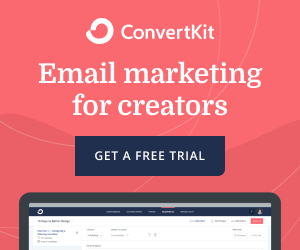In today’s digital marketing landscape, email remains a powerful tool for nurturing leads, driving conversions, and fostering customer loyalty. But simply sending out emails isn’t enough. To truly stand out, you need a strategic email marketing strategy with ConvertKit that leverages the platform’s robust integrations.
ConvertKit is a popular email marketing platform specifically designed for creators and businesses. It offers a user-friendly interface, powerful automation features, and a wide range of integrations that can significantly enhance your email marketing efforts.
Why Use ConvertKit Integrations for Your Email Marketing Strategy
Integrating ConvertKit with other marketing tools unlocks a treasure trove of benefits:
- Streamlined Workflows: Manually managing email lists and crafting personalized messages can be time-consuming. Integrations automate tasks based on specific triggers, freeing you to focus on more strategic initiatives.
- Enhanced Personalization: By connecting ConvertKit with other platforms, you gain access to valuable customer data. This allows you to segment your audience and deliver highly personalized emails that resonate with their interests and needs.
- Improved Customer Experience: Targeted and timely emails provide a more relevant experience for your subscribers. This can lead to higher engagement, increased sales, and stronger customer relationships.
- Data-Driven Decision Making: Integrations often provide valuable reporting and analytics. This data can help you measure the effectiveness of your campaigns and make informed decisions about your overall email marketing strategy with ConvertKit.
Essential ConvertKit Integrations to Supercharge Your Strategy
Here are some key integrations to consider for your ConvertKit email marketing strategy:
- Landing Page and Form Builders: Platforms like Unbounce, OptinMonster, and Leadpages integrate seamlessly with ConvertKit, allowing you to create high-converting landing pages and opt-in forms to capture leads and grow your email list.
- CRM and E-commerce Platforms: Integrating ConvertKit with CRMs like Salesforce or e-commerce platforms like Shopify allows you to send targeted emails based on purchase history, abandoned carts, or customer behavior. This can significantly boost conversion rates and sales.
- Webinar and Event Management Tools: Integrations with platforms like Zoom or Eventbrite enable you to automatically add attendees to your email list and send follow-up emails after webinars or events. This is a great way to nurture leads and convert them into paying customers.
- Analytics and Reporting Tools: Connecting ConvertKit with Google Analytics or other analytics tools provides valuable insights into your email campaigns’ performance. You can track open rates, click-through rates, and conversions to identify what’s working and what needs improvement in your email marketing strategy with ConvertKit.
Examples of Powerful Workflows with ConvertKit Integrations
Let’s explore some real-world examples of how ConvertKit integrations can supercharge your email marketing strategy:
- Welcome Series: When someone subscribes to your list after downloading a lead magnet, ConvertKit can automatically trigger a welcome series introducing your brand, showcasing your products or services, and offering additional value.
- Abandoned Cart Reminders: Integrating with your e-commerce platform allows you to send automated emails reminding customers about abandoned carts. These emails can include personalized product recommendations or special offers to incentivize purchase completion.
- Post-Purchase Upsells and Cross-sells: Based on a customer’s purchase history, ConvertKit can trigger emails suggesting complementary products or upsells. This is a great way to increase customer lifetime value.
- Segmentation and Drip Campaigns: Integrate ConvertKit with a webinar platform to segment attendees based on their interests or engagement level. You can then send targeted drip campaigns with relevant content to nurture leads and move them further down the sales funnel.
Getting Started with ConvertKit Integrations
ConvertKit offers a user-friendly interface with a dedicated “Integrations” section where you can explore and connect with various platforms. Many integrations require just a few clicks to set up.
Here are some additional tips for getting the most out of ConvertKit integrations:
- Identify Your Goals: Clearly define your email marketing goals before choosing integrations. This will help you select tools that align with your objectives.
- Start Simple: Don’t try to integrate everything at once. Begin with a few key integrations that address your most pressing needs and gradually expand as you gain experience.
- Test and Refine: Once your integrations are in place, monitor their performance and make adjustments as needed. A/B testing different email sequences and triggers can help you optimize your campaigns for maximum impact.
Conclusion
By leveraging ConvertKit’s integrations, you can create a powerful and automated email marketing strategy that delivers exceptional results. Integrations streamline workflows, personalize communications, and unlock valuable data-driven insights. With the right approach, ConvertKit can become a central hub for your email marketing efforts, fostering stronger customer relationships and driving sustainable growth for your business.
Ready to take your email marketing to the next level? Sign up for ConvertKit today and unlock the power of integrations to create a seamless and automated email marketing strategy. [https://convertkit.com?lmref=f5r7Ig]


